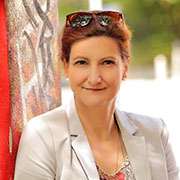For the anniversary year “Luther 2017. 500 Jahre Reformation" Charlotte Seither has composed Inschrift for choir and orchestra, a commentary on Bach’s cantata Christ lag in Todes Banden.
Charlotte Seither’s Inschrift for choir and orchestra based on Bach’s Christ lag in Todes Banden BWV 4 can be performed following on from his cantata, but also as an independent work. It is scored for the same forces as the original work (choir and strings), with the addition of two recorders and (several) trombones playing the chorale melody. The composer writes about her work:
Inschrift (2016) can be understood as a commentary, a response to Bach’s cantata Christ lag in Todes Banden. The composition draws on elements from the original work, “extending” these into the composer’s own language, and hence, away from the starting point. Alongside this, the work sets up multiple divisions of acoustic space in which the foundation is shifted: the presence and absence of Bach’s original, and of the Lutheran verses, become a process of approaching and distancing, of under- and overwriting, thereby creating a space in which diferent layers meet.
The work draws on chorale verses by Martin Luther as they are used in the Bach cantata, but they are allocated differently. There are also texts drawn from Christian liturgy and a contemporary poem by Tanja Langer. The piece can be understood as a kind of “overpainting”; it draws on elements of the original and freely develops these further, but also eliminates them for long passages and replaces them with the composer’s own settings, relating to the present. References to the original are created at the most varied levels, although the technique of quotation is largely avoided. Through an individualised configuration of the singers in the space, the oratorio-like character is restructured in a cloud-like diffused overall sound, in which language has a submerged, rather than a dominant, role: what is communicated is not identical with the sung or the spoken word, but an audible world “alongside” the language is (also) created. In this process the individual choral singers are always individuals as well as part of the whole. The boundaries between instrument and voice are often dissolved in the process and fit together to form one sound in the whole.
The composition has five movements. In the “Sinfonia” Bach’s original is taken up, cut short and continued in fragmentary form. In “Coro” recorders and violins intone the chorale melody (“Christ lag in Todes Banden”) in long notes against the choir and orchestra. In “Vox”, a sole, unaccompanied voice rises up. It speaks for the individual. In “Gebet” various choral groups combine together. This leads into a plea for salvation. With the versus the work closes on a verse of the Lutheran chorale, in which the invocation for mercy is heard anew.
Charlotte Seither
(translation: Elizabeth Robinson)
(from [t]akte 2/2016)



